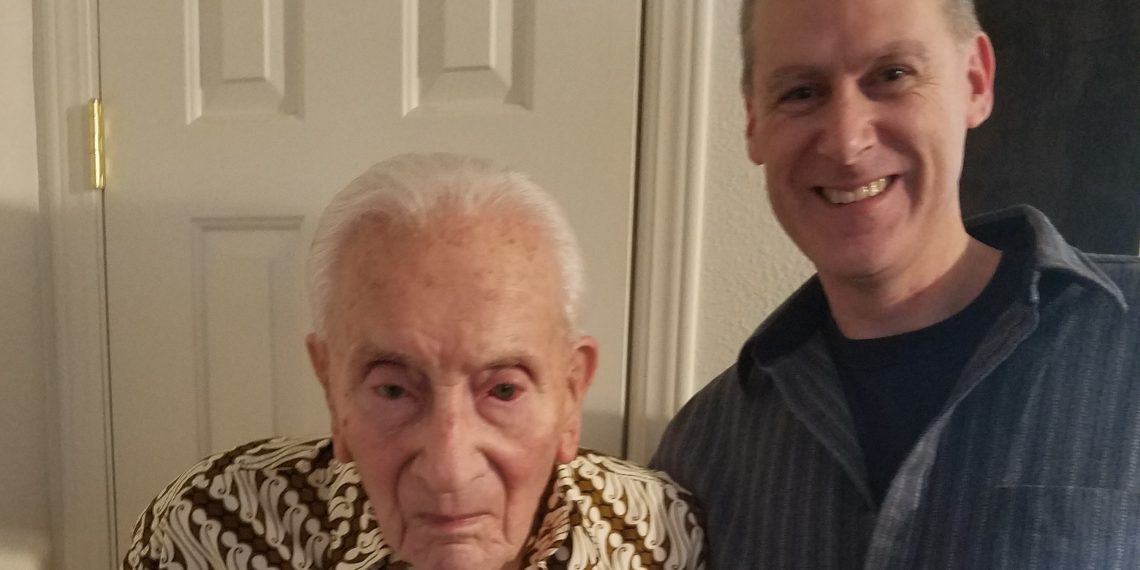After 97-year old Teck Cheney’s last stint in the hospital, his doctor recommended that he go into a nursing home. But his grandson, Derek Spence, himself a nurse, decided instead to bring him home.
To help keep his grandfather engaged, he bought a large touchscreen device that promised social interactions through video calls, games, and writing letters. It was a last-ditch attempt to stimulate Spence, who had been showing signs of depression. And it seemed to work. “I set up the touchscreen the afternoon it arrived, and my grandfather immediately found the icon for brain games and played them until midnight,” says Spence.
Down the road, if Spence wants to, he can add wireless activity sensors and environmental sensors that will notify him if anything seems amiss when he is away from home. The activity sensors can read how many times his grandfather goes to the bathroom, when he opens the refrigerator or if he gets out of his recliner. The environmental sensor would tell Spence if there’s a significant change in the temperature inside or if there’s smoke in the air. He’s already added some of the digital health devices that prompt his grandfather to take his medications and let him check his weight and take his pulse.
The market for technology-aided caregiving tools is booming as more seniors age in place. Such tools are often purchased by worried caregivers living blocks or thousands of miles away from their loved ones. Many systems aim to promote socialization, with easy access to video chats or photos and messages from relatives. There are also health monitoring systems that prompt the seniors to check their blood pressure or heart rate, in addition to activity sensors. All this information gets transmitted back to the remote caregiver.
Majd Alwan, executive director of LeadingAge’s Center for Aging Services Technologies (CAST), said these assistive technologies are popular because they “can give your family peace of mind.”
If they are introduced appropriately, he said, they have the potential to connect your loved one with emergency services, flag sleep issues, and increase medication adherence.
But there are a lot of questions about them. Like any technology, these tools are only effective if they are set up and used correctly and if the internet is working. Also, some seniors may not want to be monitored and ignore prompts or simply turn off the machine.
If you are a caregiver who is interested in trying a remote caregiving device, Alwan offers this advice:
GET BUY IN. You need your loved one’s approval, before investing in technology that may otherwise end up in the closet. The best approach is to start with the communications and engagement technology, that give them opportunities to alleviate isolation or loneliness by sharing stories or photos with families and friends. Then layer in other capabilities, such as prompts or activity monitors.
SHOP AROUND. There are several sensor monitoring systems on the market. Alwan and his organization, LeadingAge, a non-profit organization has done some of the heavy lifting through their Center for Aging Services Technology (CAST) program. On the CAST website you answer a few questions and their “Selection Tools” take over from there. On the same site, they’ve published a number of case studies that might help you even more with your decision. Costs for equipment range from about $100 to $800, with continuing monthly service charges for about $35 or $45. Alwan says to look at the cost as a more economical alternative to an assisted living facility, which runs between $3,500-6,000 a month.
BE MINDFUL OF PRIVACY. Because personal health information may be transmitted, the tech needs to be compliant with the Health Insurance Portability & Accountability Act (HIPPA) and come with sufficient privacy. To be safe, home wireless networks also should be encrypted, password protected and all devices should be behind a firewall that scans for attempted attacks, viruses and malware.
Spence said the touchscreen device he bought, which is called a Grandcare System, is improving his grandfather’s quality of life.
“That’s pretty huge when you’re coping with everything that comes along with providing care for a loved one in decline,” he said.
This article first appeared on MemoryWell.
